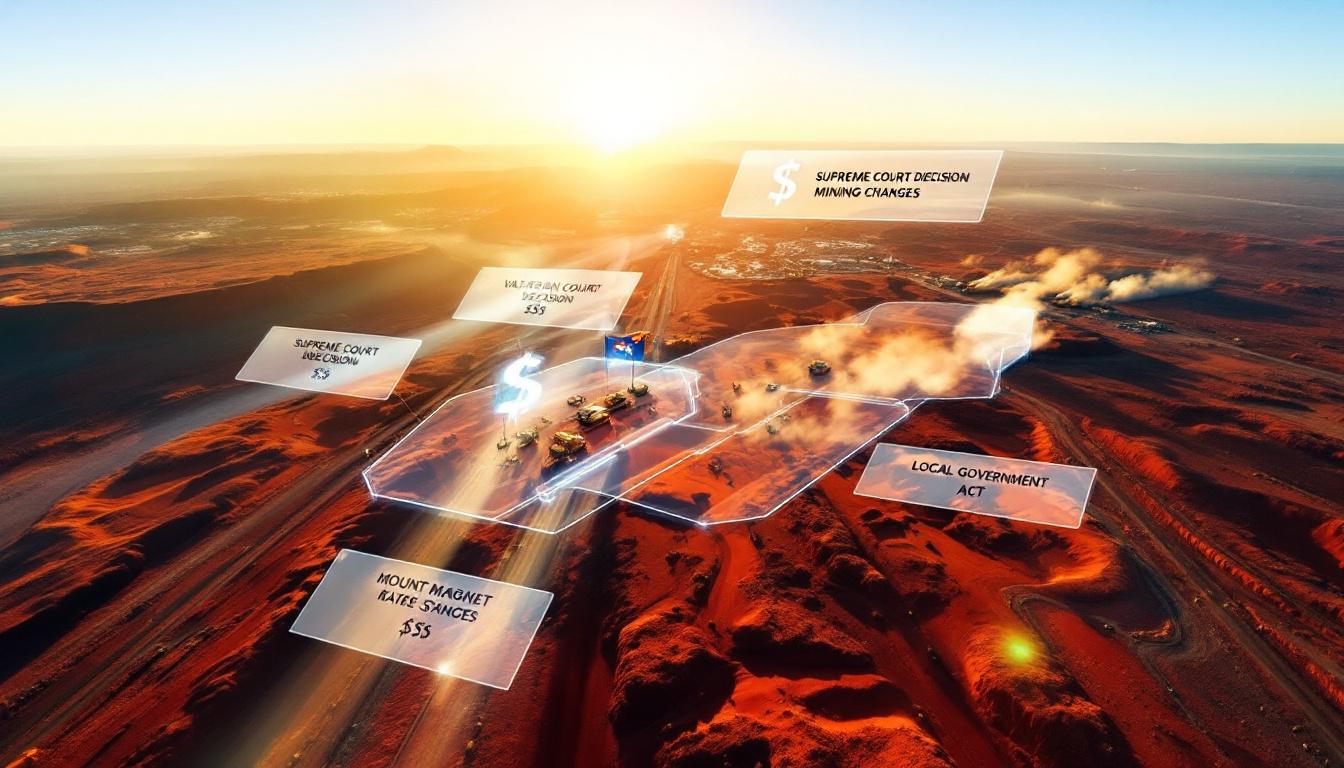Alcoa's Downgrade: Understanding the Impact on Aluminum and Alumina Markets
Bank of America's recent double downgrade of Alcoa (NYSE:AA) has sent ripples through the aluminum industry, highlighting deeper concerns about the metal's market dynamics insights. The dramatic shift from "Buy" to "Underperform" status slashed Alcoa's price target by 55% (from $58 to $26) and triggered an immediate 6.3% drop in share price. This significant change in analyst sentiment reflects not just company-specific issues but broader market trends affecting the entire aluminum value chain.
The downgrade comes amid growing evidence of structural challenges in both aluminum and alumina markets, with implications for investors, industry participants, and downstream consumers. As one of the world's leading producers, Alcoa's financial health serves as a barometer for the wider aluminum sector.
Why Was Alcoa Downgraded by Bank of America?
The Double Downgrade Explained
Bank of America's decision to downgrade Alcoa from Buy to Underperform represents one of the most severe sentiment shifts possible in analyst ratings. The dramatic price target reduction from $58 to $26 reflects a fundamentally changed outlook on Alcoa's business prospects. This 55% target reduction signals extraordinary pessimism about near-term prospects.
The immediate market reaction was telling – Alcoa's stock plummeted 6.3% during Tuesday's trading session, with trading volumes significantly above average. This volatility suggests institutional investors were rapidly repositioning their holdings based on BofA's influential analysis.
Key Factors Behind the Downgrade
Multiple factors contributed to Bank of America's bearish stance. Primary among these is the increasingly weak outlook for aluminum prices globally. Current LME aluminum prices have fallen 18% year-to-date to approximately $2,200 per metric ton, with futures contracts suggesting limited recovery potential through 2025.
Alumina prices have similarly deteriorated, dropping 12% to around $320 per metric ton. As the primary raw material for aluminum production, this decline should theoretically help smelter economics. However, BofA analysts noted that the "unfavorable alumina pricing dynamics" actually create margin pressure for integrated producers like Alcoa.
The bank's revised EPS estimates paint a stark picture – 2025 EPS projections were slashed from $4.50 to just $1.80, reflecting both commodity price weakness and operational challenges. Analysts specifically cited "persistent inefficiencies" at several of Alcoa's production facilities as compounding the negative price environment.
How Are Aluminum and Alumina Markets Trending?
Current Market Conditions
The aluminum market is currently experiencing a significant supply-demand imbalance. According to data from CRU Group, the global market is heading toward a 1.5 million metric ton surplus in 2025, applying substantial downward pressure on prices. This oversupply condition contrasts sharply with the tight market conditions seen in early 2022.
Alumina markets tell a similar story. Refinery expansions, particularly in China and Indonesia, have outpaced aluminum production growth. This has created a disconnect between alumina and aluminum prices. Historically, alumina trades at roughly 15-17% of the aluminum price, but this ratio has compressed to just 14%, reflecting the oversupplied nature of the alumina market.
A key technical aspect often overlooked is the quality dynamics within the alumina market. While overall supply is abundant, higher-grade smelter alumina (with lower sodium content) commands premium pricing due to its operational advantages. This quality spread has widened as overall prices declined.
Global Supply Chain Factors
China continues to dominate global aluminum production, accounting for approximately 58% of worldwide output. Chinese production has increased by 5% year-over-year despite government attempts to limit capacity growth. This production increase has been enabled by declining domestic coal prices, which have lowered the energy-intensive industry's cost structure.
Energy costs remain the critical variable in the aluminum production equation. Smelters require approximately 13,500 kWh of electricity to produce a single metric ton of aluminum, creating vast disparities in production economics based on regional energy prices. Facilities powered by hydroelectric energy (common in Norway, Canada, and parts of Russia) maintain a $500 per metric ton cost advantage over coal-dependent regions.
The differential impact of carbon pricing adds another layer of complexity. European producers face carbon costs approaching €100 per ton of CO2, adding approximately $320 to production costs per ton of aluminum. This regulatory burden, absent in many competing regions, has led to multiple European smelter curtailments, with approximately 800,000 tons of capacity idled in the past 18 months.
What Are the Financial Implications for Alcoa?
Earnings Forecast Revisions
Bank of America's drastic reduction in Alcoa's financial projections highlights the severity of the current situation. The bank cut its 2025 EBITDA estimate from $3.2 billion to just $1.4 billion – a 56% reduction that fundamentally alters the investment case for the company.
The downward revision factors in both pricing pressures and operational challenges. Lower realized aluminum prices are expected to reduce revenue by approximately $1.1 billion, while higher-than-expected production costs could add another $400 million in negative impact. The operational issues are particularly concerning as they suggest internal inefficiencies beyond market conditions.
Cash flow projections have deteriorated significantly, with free cash flow now expected to be negative through 2025. This dramatic shift from previous forecasts of $1+ billion in annual free cash flow undermines the dividend sustainability narrative that had attracted income-focused investors.
Balance Sheet Considerations
Alcoa's balance sheet now faces increased scrutiny as market conditions deteriorate. The company carries approximately $3.8 billion in debt, with $1.2 billion maturing in 2026. While this debt load was considered manageable under previous price assumptions, the revised outlook raises questions about refinancing risks.
Moody's has warned that Alcoa's liquidity coverage ratio may fall below 1.5x if aluminum prices remain at current levels – a key threshold for maintaining the company's current credit rating. Any downgrade would increase borrowing costs at precisely the wrong time.
Capital expenditure management becomes critical in this environment. Alcoa had previously announced $375 million in planned growth investments for 2025, focused on capacity expansions and efficiency improvements. Market observers now question whether these projects will be delayed or canceled to preserve cash.
How Does This Compare to Previous Aluminum Market Cycles?
Historical Price Patterns
The aluminum industry is notorious for its boom-and-bust cycles, though current conditions display some unique characteristics. During the 2008-2009 global financial crisis, aluminum prices collapsed by approximately 60% over 18 months before finding a floor. The subsequent recovery took 24 months to regain previous price levels.
More recently, the 2015-2016 commodity downturn saw aluminum prices decline by 45% over 20 months. What distinguishes the current cycle is its occurrence despite relatively strong global GDP growth, suggesting structural rather than cyclical factors are at play.
Historical analysis reveals that aluminum price recoveries typically begin when visible inventory levels start to decline. Current LME warehouse stocks stand at 1.8 million tons – 22% higher year-over-year – suggesting price stabilization may be months away. Shadow inventory (material stored outside official exchanges) is estimated to be 2-3 times higher, creating an additional overhang.
Industry Consolidation Implications
Previous aluminum downturns have triggered significant industry consolidation. The 2008 crisis led to Rio Tinto's acquisition of Alcan, while the 2015-2016 downturn saw Chinese producers consolidate domestic market share under government-encouraged mergers.
The current environment appears ripe for similar consolidation activity. High-cost Western producers face particular vulnerability due to energy price volatility and carbon regulations. Wood Mackenzie estimates that approximately 15% of Western smelting capacity operates at cash costs above current aluminum prices.
Private equity interest in the sector has increased, with firms apparently viewing current valuations as entry opportunities. Unlike previous cycles, however, ESG considerations now complicate acquisition strategies, as carbon-intensive assets face increasing investor scrutiny regardless of price.
What Are the Broader Industry Implications?
Impact on Other Aluminum Producers
Alcoa's downgrade has implications for the entire aluminum production sector. Other major producers including Rio Tinto, Norsk Hydro, and Rusal face similar market dynamics, though with important differences in their cost structures and vertical integration.
Companies with significant hydropower assets maintain substantial advantages in the current environment. Norsk Hydro, with 70% of its aluminum production powered by owned hydroelectric facilities, enjoys a production cost approximately $450 per ton lower than the industry average. This advantage expands during periods of energy price volatility.
The cost curve position has become increasingly determinative of producer fortunes. First-quartile producers (primarily in Canada, Russia, and the Middle East) can generate positive cash flow even at current prices, while third and fourth-quartile producers (concentrated in China, the US, and Europe) face negative margins and potential curtailments.
Downstream Effects
The automotive industry, a key aluminum consumer representing approximately 23% of global demand, faces complex impacts from aluminum's price decline. While lower input costs benefit manufacturers, they also reduce the economic incentive for aluminum-intensive vehicle designs that had been gaining momentum.
Aluminum demand growth in automotive applications has slowed to an estimated 2% for 2025, down from previous forecasts of 5%. This deceleration reflects both overall vehicle production trends and paused lightweighting initiatives as steel regains cost competitiveness in certain applications.
The packaging sector represents another major demand source, accounting for approximately 17% of global aluminum consumption. Lower aluminum prices have accelerated the shift toward increasing recycled content, which now averages 52% globally but varies significantly by region. This structural change may permanently alter primary aluminum demand patterns.
What Should Investors Consider?
Investment Strategy Recommendations
Investors facing aluminum sector weakness should consider several strategic approaches. Direct equity exposure should generally be limited to first-quartile producers with strong balance sheets capable of weathering prolonged price weakness. Companies with significant downstream operations also offer better insulation from raw material price volatility.
For those maintaining sector exposure, hedging strategies utilizing CME Group aluminum futures contracts can provide downside protection. The current contango in the futures curve (where future prices exceed spot prices) creates carrying costs but offers security against further price deterioration.
Diversification within the materials sector represents another prudent approach. Global commodities insights suggest battery metals (lithium, nickel, copper) operate under different supply-demand dynamics than aluminum, potentially offering complementary performance during aluminum's downcycle.
Key Metrics to Monitor
Several indicators provide early warning of potential market recovery. LME inventory levels serve as the most visible signal – sustained inventory draws would suggest demand improvements or supply discipline. Currently at 1.8 million tons (up 22% year-over-year), these inventories require close monitoring.
Chinese smelter utilization rates offer another critical metric. Current rates have declined to 82% from 88% earlier in 2024, but remain above the level that would signal meaningful production discipline. Analysts suggest rates below 75% would be needed to rebalance global markets.
Energy costs deserve particular attention given their outsized impact on aluminum economics. European gas prices and Chinese coal costs serve as useful proxies for regional production economics and potential curtailments that could accelerate market rebalancing. The ongoing clean energy revolution will also play a crucial role in determining future production costs.
FAQ: Alcoa and Aluminum Market Outlook
What is the relationship between aluminum and alumina prices?
Alumina (aluminum oxide) is the primary raw material used to produce aluminum metal through electrolysis. Typically, alumina prices represent about 30-40% of the total production cost of aluminum, creating a strong correlation between the two commodities. A $10 per metric ton drop in alumina prices reduces Alcoa's costs by approximately $150 million annually, according to a recent analysis by Alcoa.
The price relationship exhibits important lag effects, as alumina contracts typically adjust quarterly while aluminum prices fluctuate daily. This timing difference creates margin volatility for integrated producers like Alcoa during periods of rapid price changes. Regional factors further complicate the relationship, with freight costs creating significant price differentials between Atlantic and Pacific market alumina.
How might energy prices affect Alcoa's profitability?
Aluminum production ranks among the most energy-intensive industrial processes, requiring approximately 13,500 kWh per metric ton produced. This energy intensity means electricity costs typically represent 30-40% of production expenses, creating extraordinary sensitivity to energy price movements.
Alcoa's smelter portfolio has varying energy exposure. Its Canadian operations benefit from long-term hydroelectric contracts providing price stability, while U.S. facilities face greater market exposure. A $10/MWh change in electricity costs impacts Alcoa's production costs by approximately $270 million annually across its portfolio.
Renewable energy transition creates both challenges and opportunities. Smelters using hydroelectric power maintain a $500 per metric ton cost advantage over coal-dependent regions. This differential has driven Alcoa's strategic emphasis on its Canadian assets while raising questions about the long-term viability of certain U.S. operations reliant on fossil fuel power.
What are the main demand drivers for aluminum globally?
The transportation sector, particularly automotive, represents the largest aluminum demand source at approximately 23% of global consumption. Lightweighting trends to improve fuel efficiency and electric vehicle range have driven aluminum intensity in vehicles, though price sensitivity can affect adoption rates.
Construction accounts for approximately 20% of aluminum demand, primarily in windows, doors, and structural components. This sector exhibits high cyclicality and regional variation, with developed markets focusing on renovation while emerging markets drive new construction demand.
The packaging sector (17% of demand) offers more stability but faces substitution pressures from alternative materials and recycling initiatives. Electrical applications (12%) show the strongest growth trajectory, driven by grid expansion and renewable energy infrastructure that requires aluminum's conductivity advantages. For companies looking to navigate this complex landscape, developing effective mining investment strategies and embracing data-driven investing approaches will be essential for success.
Want to Catch the Next Major ASX Mineral Discovery?
Stay ahead of the market with Discovery Alert's proprietary Discovery IQ model, which instantly identifies significant mineral discoveries on the ASX the moment they're announced. Visit the Discovery Alert discoveries page to see how historic mineral discoveries have generated substantial returns for early investors.




